A Nottinghamshire Nature Reserve, opened 25 years ago this year and which provided a vital connection to nature for residents during lockdowns, has become the first recorded breeding site in the county for two species of egret - Great White Egret and Cattle Egret - just over a decade since the first breeding record for Little Egret was recorded at the site in 2013.
Rare heron species breed successfully at Nottinghamshire nature reserve

Juvenile Great White Egret chicks at Besthorpe Nature Reserve - Photo credit: Janice Bradley
Earlier this summer a pair of Great White egrets raised up to 5 chicks and a second pair are thought to have fledge chicks, in addition four juvenile cattle egrets have been spotted - with two pairs thought to have nested successfully. The birds, all members of the heron family, have nested in trees on an island at Nottinghamshire Wildlife Trust’s Besthorpe Nature Reserve in the Trent Valley - the tree top nests are known as a heronry. Nestled between the Trent side villages of Collingham and Besthorpe, north of Newark, the site, like many wetland nature reserves, was previously a commercial sand and gravel quarry. The reserve covers 68 hectares of diverse habitat ranging from open water and reedbeds to shingle islands and wildflower meadows.
In 2012 the reserve underwent a major transformation as part of the charity’s largest ever habitat creation project at that time, to re-establish a once-thriving reedbed in the northern section of the reserve and to re-profile the Mons Pool area – where the two new heron species have bred. The aim at Mons Pool was to create a mix of shallows and shelving margins to provide the diversity required for a myriad of species to thrive – including wading birds such as herons. This work was funded by the Heritage Lottery Fund (now the National Lottery Heritage Fund and the landfill tax grants, to enhance the restoration undertaken by Lafarge and Tarmac, the quarry operators.
The reserve is situated close to the RSPB’s Langford Lowfields Nature Reserve and significant investment in both sites in recent decades had seen the Trent Vale blossom into great place to see and enjoy wildlife throughout the year – even before the new arrivals. Speaking about the new records, Wayne Ball, Head of Nature Recovery (South) for Nottinghamshire Wildlife Trust, whose team care for the site said: “We are absolutely delighted that both Great White and Cattle Egrets have bred successfully. Keen locals, including Nottinghamshire Birdwatchers member Nick Crouch, and members of our staff, have been keeping an eye on them and we didn’t want to release any details until we knew they’d fledged safely – but it’s great to now be able to share the news.”
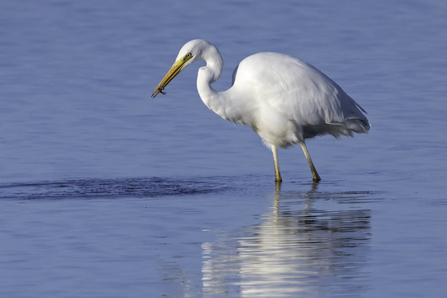
Great white egret at Idle Valley, with a small fish - Photo credit: Mike Vickers
Speaking on behalf of RSPB, Langford Lowfield's Manager Joe Harris said: “The cattle egrets that were nesting at Besthorpe Nature Reserve have been visiting Langford Lowfield’s every day to feed and since the chicks hatched, they have joined the adults on their visits: the Great Whites Egrets have also visited. The breeding success underlines the importance of having big, connected, complementary habitats close by - with Besthorpe offering nesting opportunities and Langford giving additional feeding opportunities to the birds.”
Adult Cattle Egrets with juveniles have also been seen at NWT’s Skylarks Reserve in the last month, reinforcing the importance of these high-quality stepping stones of wetland habitat along the Trent Valley. With adult Great White Egrets and Cattle Egrets now seen regularly from the Trust’s Attenborough Nature Reserve in the south of Nottinghamshire to the Idle Valley Nature Reserve and Newington Quarries in the North, it seems likely that these rare birds will find more breeding sites in the near future.
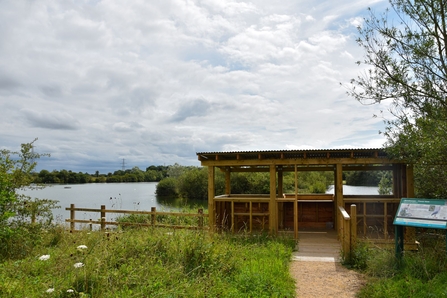
Photo credit: Sophie Bell
To complement the range of habitats at Besthorpe Nature Reserve, there is also a network of paths and wildlife watching hides, with the paths and hides in the Mons Pool area, close to the car park off Trent Lane being accessible for wheelchair users. The reserve has an active group of local volunteers who help maintain the habitats and facilities as well as providing a warm welcome for visitors. Over the summer there has also been excitement over the number of Spoonbills visiting Besthorpe Nature Reserve, some of which appear to have taken up residence, - underlining the importance of the Trent Vale as a haven for wildlife. Spoonbills have also been seen at other sites in the Trent Valley this summer, including NWT’s Skylarks Nature Reserve, and RSPB’s Beckingham Marshes,
The success of the heronry at Besthorpe is in stark contrast to concern in the mid-1990s when young heron chicks were routinely dying as a result of suspected industrial pollution. Thankfully, following diligent work by volunteers from the North Notts Ringing Group and research scientists supported by the Wildlife Trust, BTO and the Environment Agency the source of the pollution was found and measures put in place to prevent future impact on the birds.
Fact file
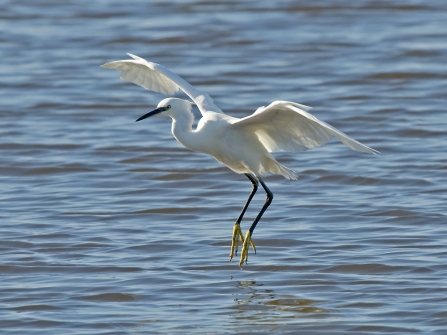
Little egret in flight - Photo credit: Mike Vickers
Little egrets are small, white herons that feed on small fish and crustaceans. Once a very rare visitor from the Mediterranean, little egrets are now a common sight around the coasts of southern England and Wales as they expand their range, possibly due to increasing temperatures caused by climate change.
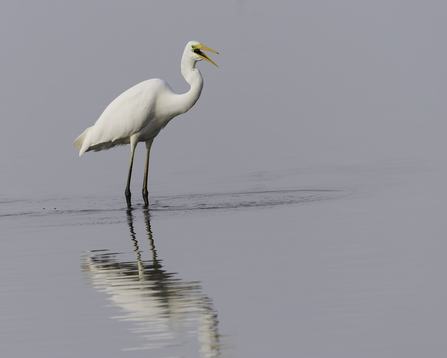
Great white egret with beak open - Photo credit: Mike Vickers
Great white egrets were formerly a very rare bird in Britain but can now be seen throughout the year, often close to other heron species. They are similar in size to the familiar Grey Heron. The birds have increased dramatically in number in the UK since they began colonising around 2010 – but breeding pairs are still very much a rarity with an estimated 10 pairs nesting annually according to the British Trust for Ornithology (BTO)
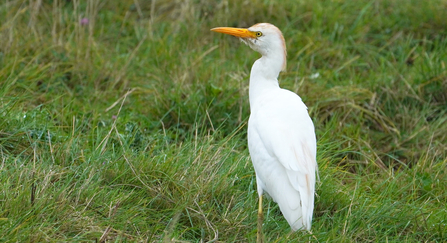
Cattle egret - Photo credit: Jim Higham
Cattle egrets have become an increasingly common sight in parts of the UK because of one of the greatest range expansions in bird world but remain a relatively rare breeding bird in the UK. At the start of the 20th century, the western form of cattle egret was only in southern Spain, Portugal and North and tropical Africa. Over the next few decades, they spread south to South Africa and north across Europe. Until just a few decades ago they were still rare visitors to the UK, but this changed following a large influx of birds during the winter of 2007/2008 when over 200 birds were recorded – mainly in south-west England. The first UK record of breeding cattle egrets followed in the summer of 2008 when at least two pairs nested in Somerset in the summer of 2008.
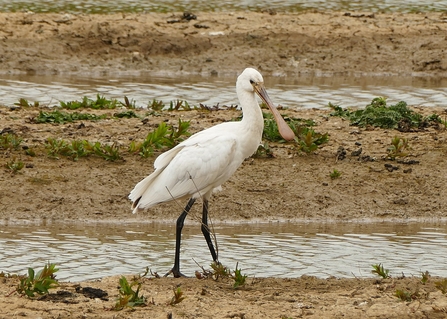
European spoonbill - Photo credit: Gary Binder
Spoonbills are relatives of ibises; these rare breeders are becoming increasingly common in the east and south of England with some colonies of breeding birds now established, but the closest colony to Nottinghamshire is in Yorkshire. Almost as big as a grey heron, the spoonbill feeds on shrimps and other aquatic invertebrates which it catches while sweeping its bizarre, spoon-shaped bill from side to side in the water. Seen most regularly in Britain at coastal sites in the east and south-west, it mainly breeds in southern Europe and North Africa and as far east as India and China. In recent years breeding birds have become established in England.
See for yourself
Besthorpe Nature Reserve - from the A1133, turn into Besthorpe village (south side) and then follow Trent Lane until you see signs for the car park.
